- Stay Connected
 Abraham Lincoln
If given the truth, the people can be depended upon to meet any national crisis...
Abraham Lincoln
If given the truth, the people can be depended upon to meet any national crisis...
 Guildford news...
for Guildford people, brought to you by Guildford reporters - Guildford's own news service
Guildford news...
for Guildford people, brought to you by Guildford reporters - Guildford's own news service
Beekeeper’s Notes September 2016: Ghostly Bees
Published on: 1 Sep, 2016
Updated on: 1 Sep, 2016
Hugh Coakley, who keeps bees in Worplesdon, talks about observing the hive entrance for clues on what is going on inside and the strange sighting of ghostly bees around this time of year.
Beekeepers spend a lot of time observing the comings and goings of the bees at the hive entrance.
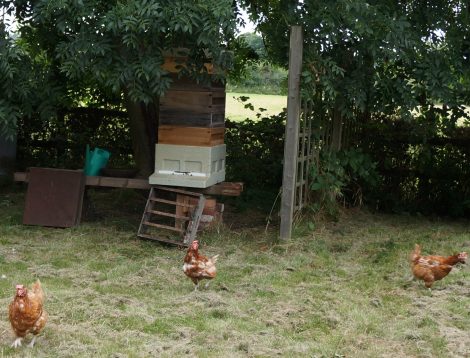
Hive at the bottom of my garden. It is very pleasant to wander down to look at the bees at the end of a day at work. The chickens were interested in the bees as a food source initially but soon learned it was not a good idea once they were stung.
You can tell a lot about what is going on inside the hive without actually opening it up and disturbing the bees. High frequency take-offs and landings, like Heathrow, can point towards a busy, strong hive.
Clustering around the entrance could mean that it is too hot inside or not enough space for the number of bees.
Bees bringing in pollen are an indication that the queen is laying as she should be.
You can also get a feel for what plants the bees are visiting by the colour or the appearance on the bee of the pollen they are bringing back home.
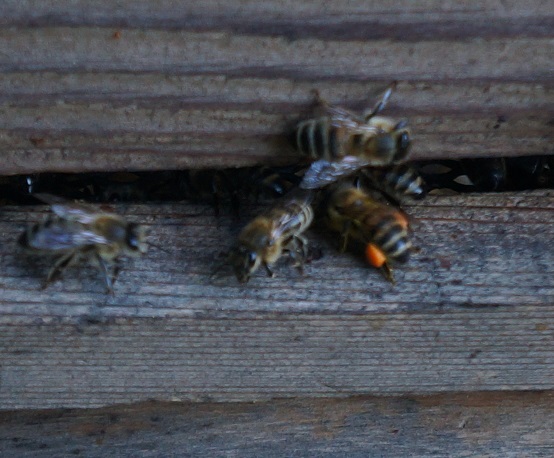
Red – orange pollen here – not sure what it is but it could be copper beech. It needs to be viewed through a microscope to identify it with any certainty.

Different pollen, white to creamish, possibly thistle.
One of the most striking is Himalayan balsam which gives the bees a white coating. They look like a ghostly apparition as they float into the hive.
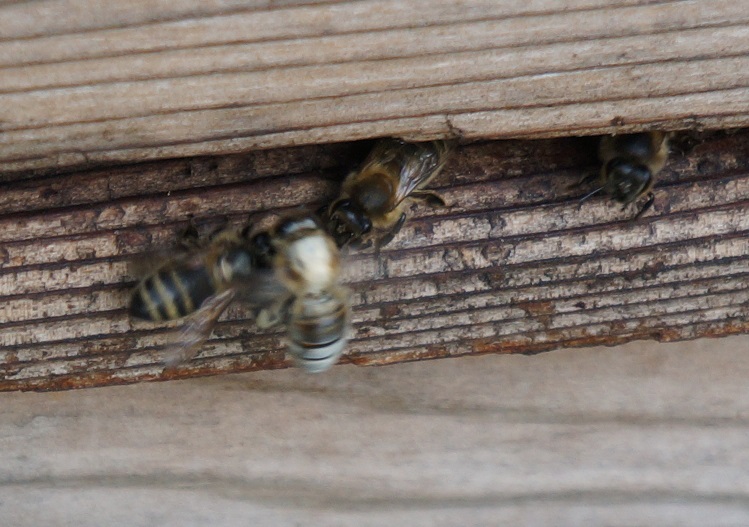
Ghostly bee coming in to land. Strange sight of a white coloured bee. While it looks odd, it is only pollen from the Himalayan balsam. Click on the photo to enlarge it in a new window.

Himalayan balsam can take over a river bank and very effectively out-compete other species. A very pretty flower but probably not a good thing at large in this country.
Himalayan balsam is popular with bees but less so with people in the UK. It flowers through the summer and into the autumn so it is a welcome source of forage for the bees.
Not so welcome to other indigenous plants that get smothered out by it. It is prolific and can take over a river bank very quickly. You can see volunteer conservationists pulling it up on river banks each year.
The bees don’t know whether it is a local (good?) plant or an invasive (bad?) plant. They will go for anything within reach which will give them the protein (pollen) or carbohydrate (nectar) they need.
It’s also the time when the wasps are casting around looking for food. They will be fended off by a strong hive but, any weakness, and they will go in in great numbers and clear the hive out.



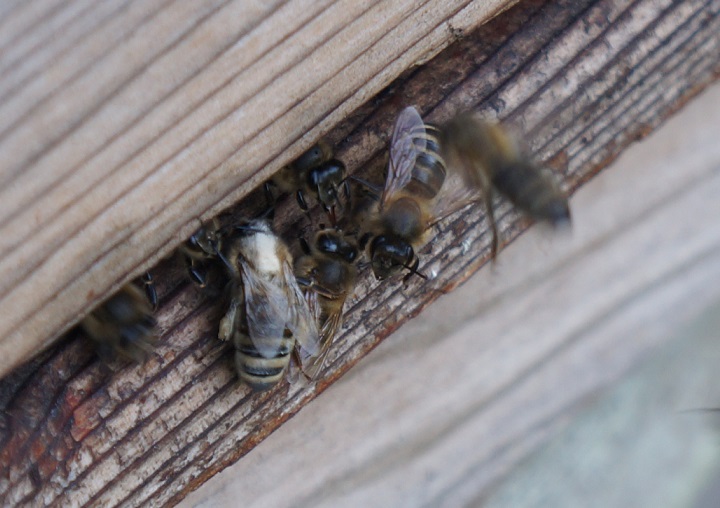
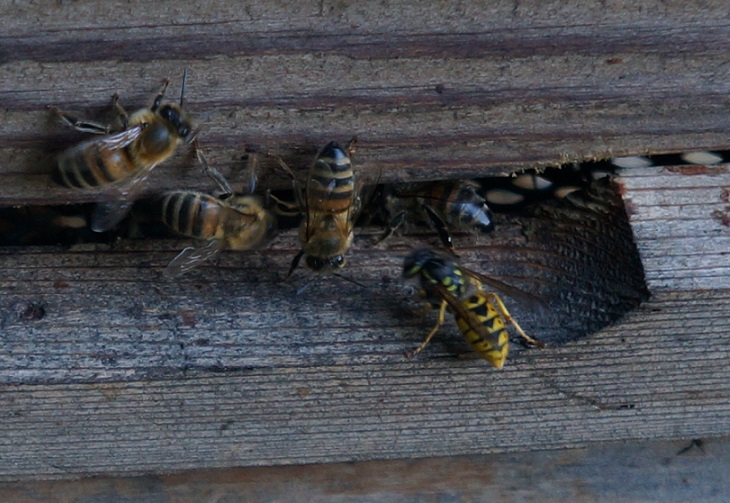
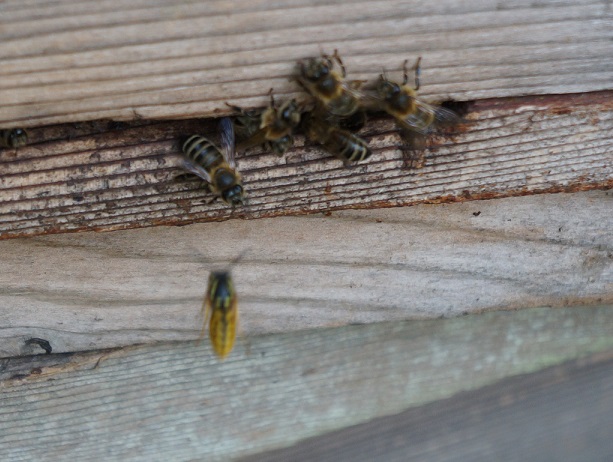









Recent Comments